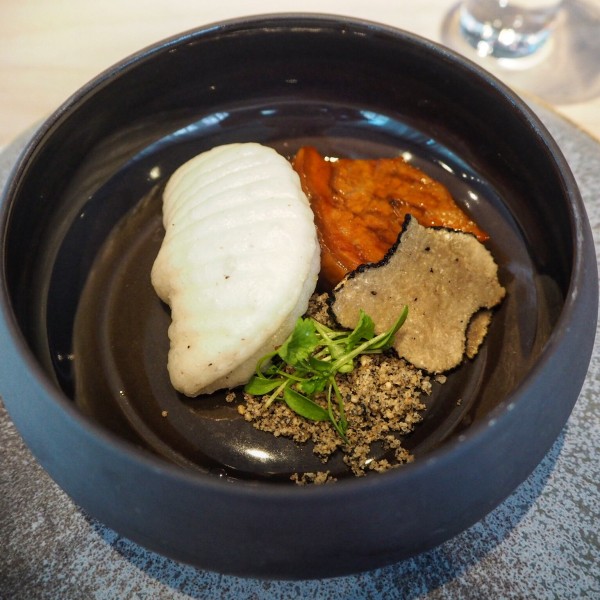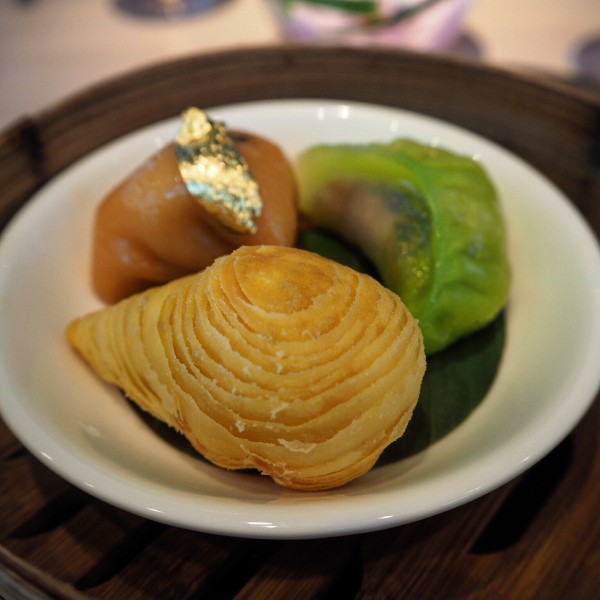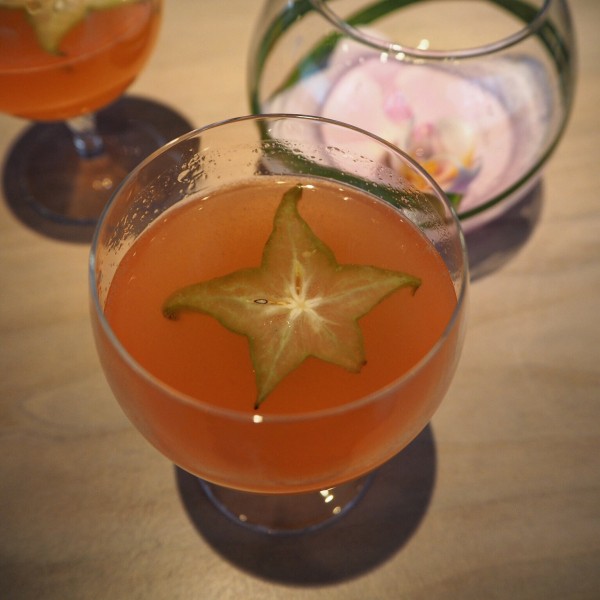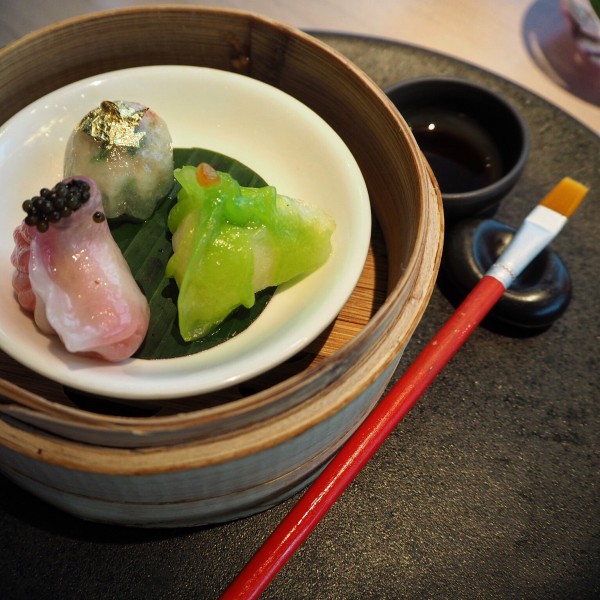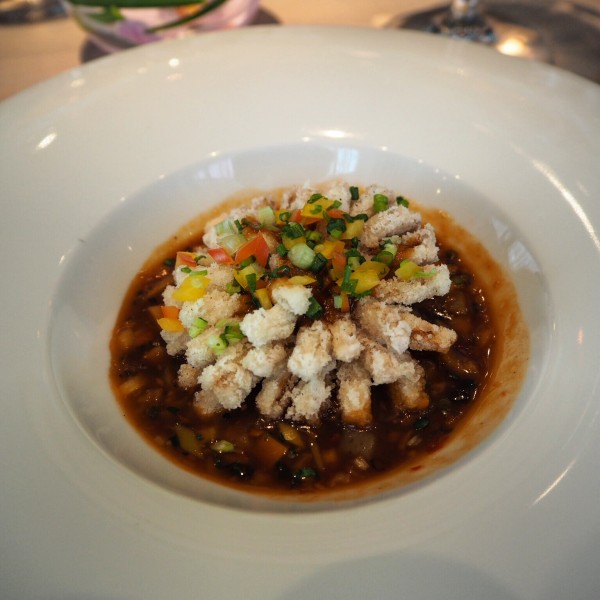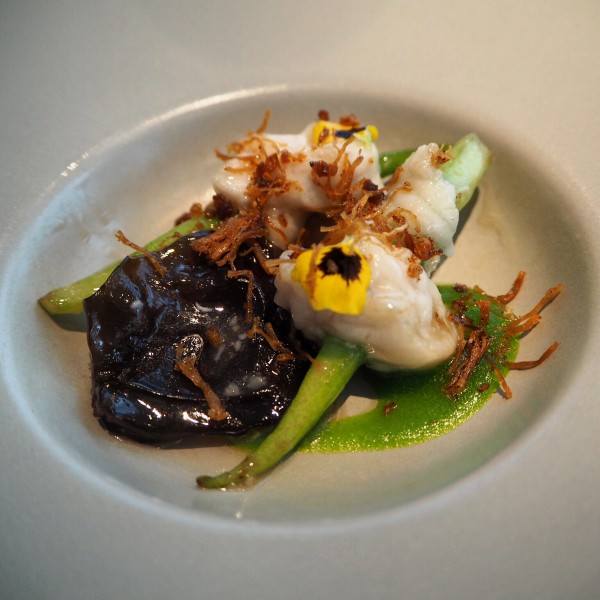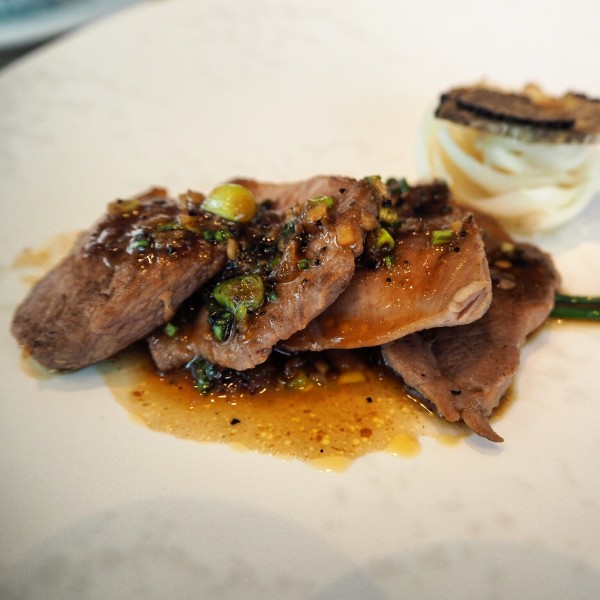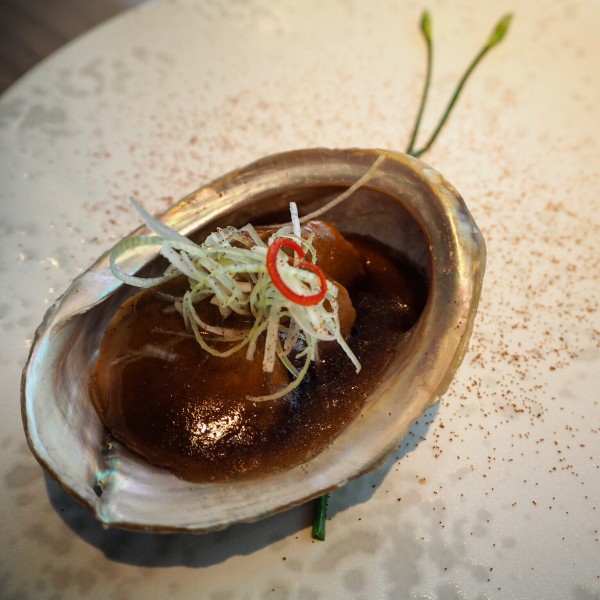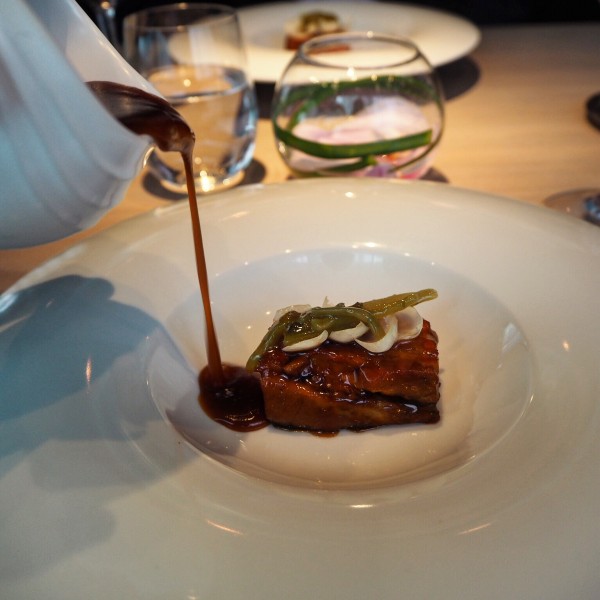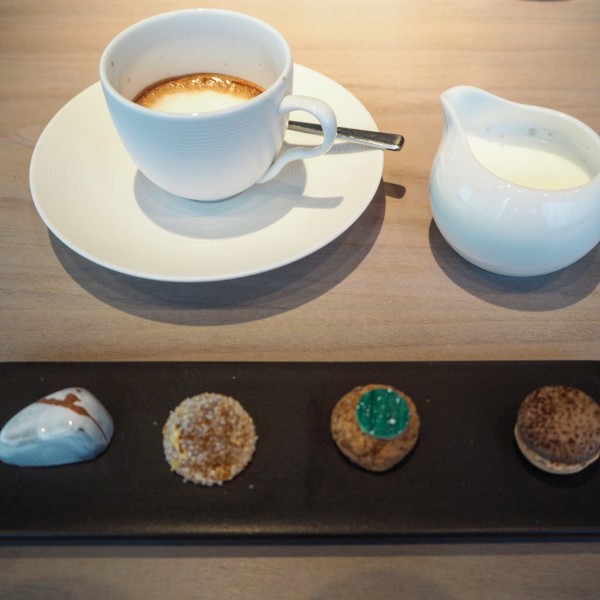The area north of Liverpool Street Station is very, very quiet on a Saturday lunchtime – this tranquility suited an extensive and rather meditative lunch at HKK, a restaurant in the Hakkasan Group led by Michelin-starred head chef Tong Chee Hwee. The prospect of a twelve course tasting menu should be a little worrying but, with each dish being tiny, fresh and delicious, it is a gentle and relaxing experience. There is however a danger, with each course being paired by a fine wine, of falling off one’s chair halfway through the meal.
The charming and attentive waiter settled us in the pale elegant dining room and brought us bottled water and warm hand towels to emphasise the ritual nature of the proceedings. After a tiny amuse-bouche, we were brought a diminutive steak sandwich: Wagyu beef and black truffle in a mantou or steamed bun. Succulent and flavoursome, this was an excellent start, accompanied by a glass of chilled Heavenly Brew, a potent Sake that we sipped at gingerly. Next a seafood soup, its richness set against the sharp goji berries that one dropped in.
The oh-so-pretty trilogy of dim sum in their traditional basket were accompanied by a lively orange cocktail, Bitter Fortune, whose colour and array of flavours paralleled the steamed dumplings of sea bass, crab and lobster. The modest theatricality of the meal continued with a whole Peking duck, a splendid polished mahogany coloured bird, being expertly carved at the table and served with customary pancake and a little heap of sugar in which to dip the squares of sublime crispy skin. A most unusual German Pinot Noir, Stepp, was a robust partner to the intense gamey meat.
Little fish courses followed: coils of Dover sole and then delicious scallops in a sesame sauce; again our delightful Spanish sommelier had a surprising wine accompaniment, a Northern Italian rosé. Next came flaming eggs, the size of Easter eggs, made of salt sitting in thyme branch bird-nests! Broken open, these contained super-moist pieces of Bresse chicken suffused with mushroomy juices. A glass of citrusy white Burgundy added to the enjoyment. Our palates were refreshed with delicate Peony tea and we were served sticky, salty Abalone in its shell.
The final savoury course was a rectangle of melting pork belly complemented by the crisp sharpness of edible lily bulb and tiny pickled vegetables. The richness of the meat was matched with a distinctive, spicy South Australian red made entirely with the Mourvedre grape.
The puddings were not the disappointment one sometimes finds at the end of a Chinese meal – I could have eaten much more of the delicate coconut tapioca with mango granita and the Red berry parfait wrapped in a sesame tuile was equally delicious. The delicately fizzy and subtly sweet Moscato d’Asti completed the heavenly finale (not forgetting the tiny petits fours and coffee).
If you want a very special meal then HKK will not disappoint – this is the finest Chinese food I have ever eaten.
More information on HKK and make a booking here.
Written by a Thoroughly Modern Man, Chris Kenny.


